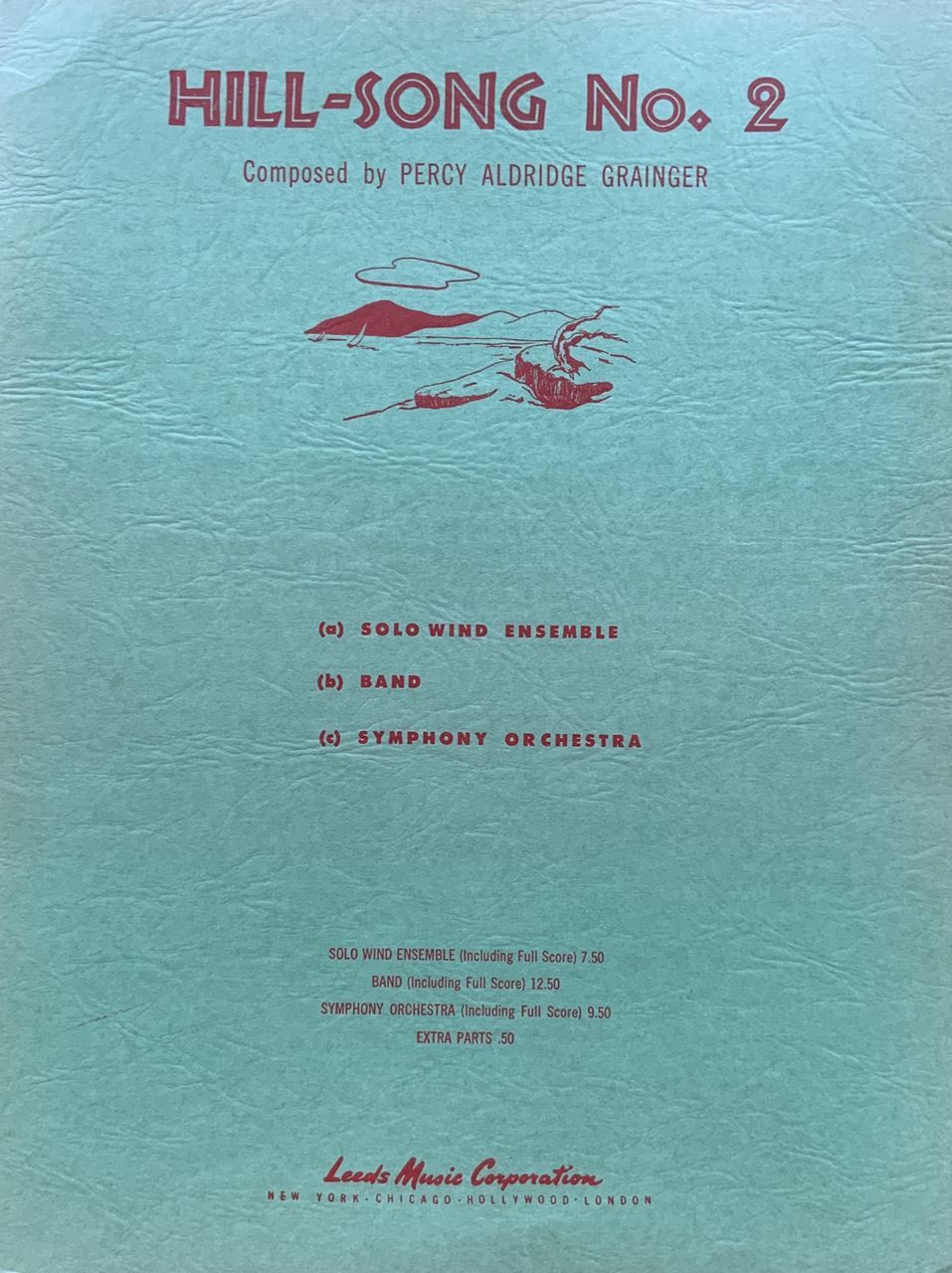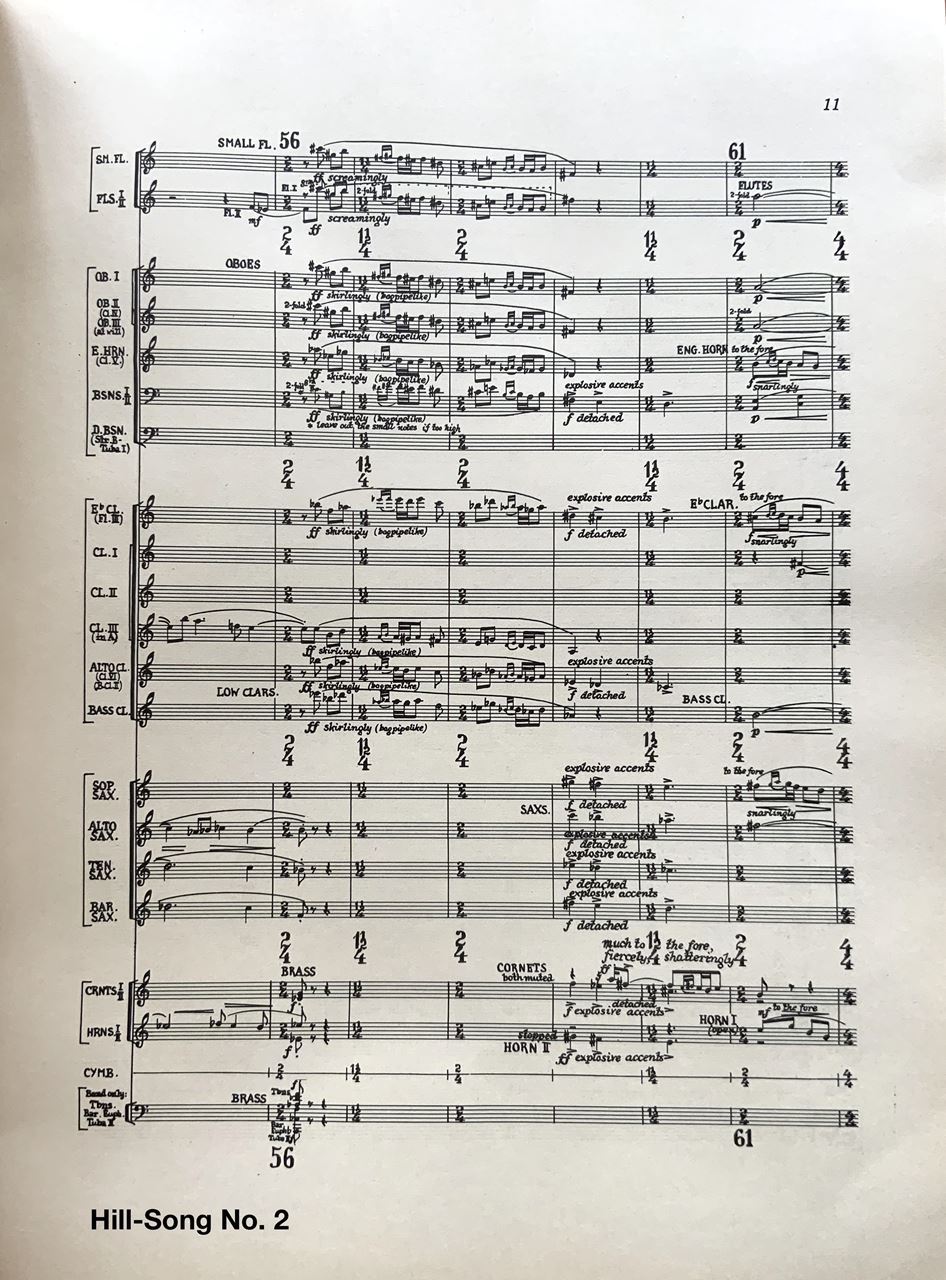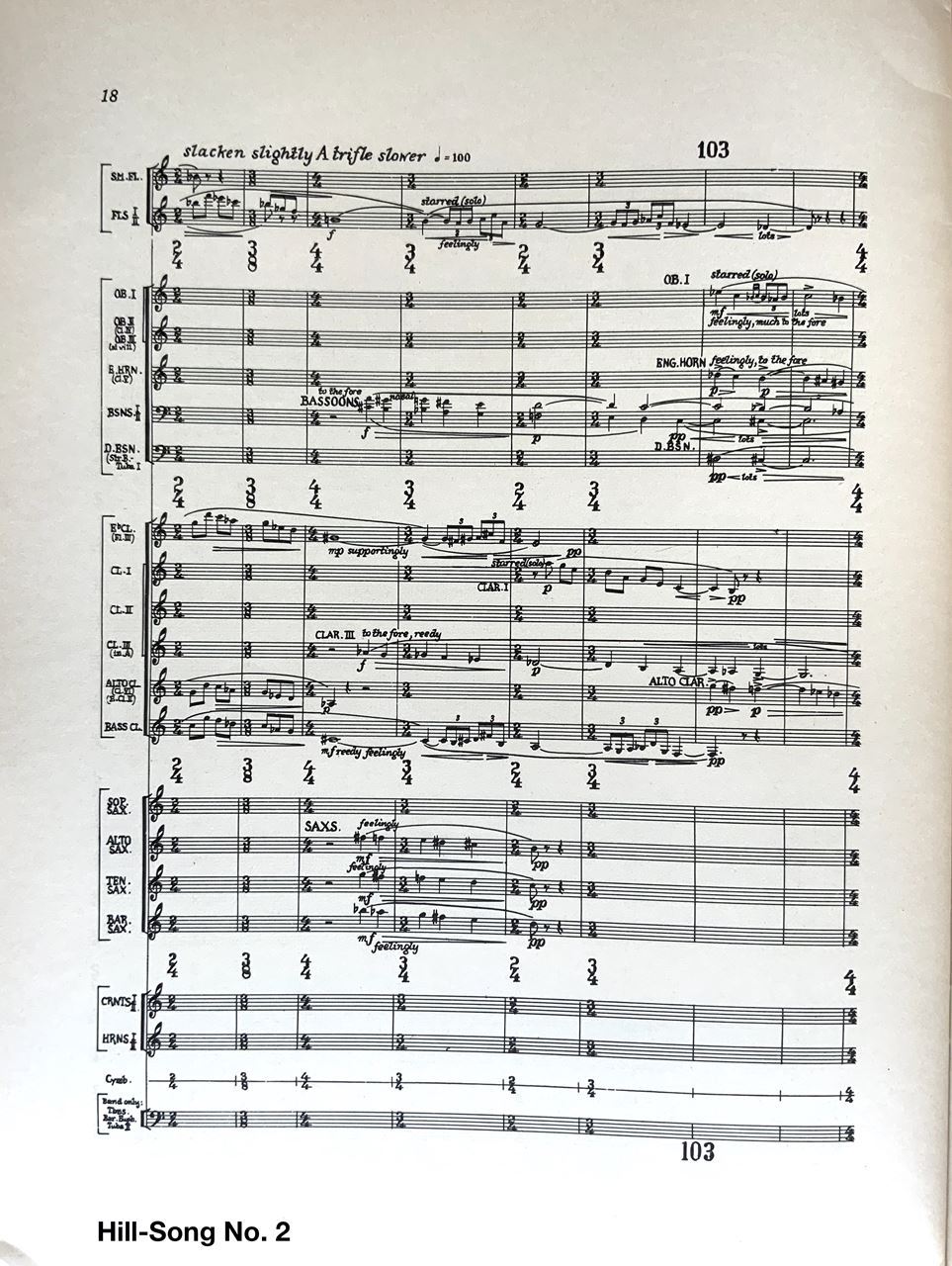by William Garlette
 Our upcoming celebration of the 85th Anniversary of the premier of Lincolnshire Posy has generated several excellent queries. The one question I’d like to address in this blog is Grainger’s method of writing irregular or, what we call now, asymmetrical/composite meters and why he chose the notation he used. The question we get is why did Grainger write 2 1/2/4 and not 5/8? And then why does he use a mixture of both methods?
Our upcoming celebration of the 85th Anniversary of the premier of Lincolnshire Posy has generated several excellent queries. The one question I’d like to address in this blog is Grainger’s method of writing irregular or, what we call now, asymmetrical/composite meters and why he chose the notation he used. The question we get is why did Grainger write 2 1/2/4 and not 5/8? And then why does he use a mixture of both methods?
To Bandleaders
“Bandleaders need not be afraid of the two types of irregular rhythms met with in the “Lincolnshire Posy”; those conveyed by changing time-signatures in “Rufford Park Poachers,” and those (marked “Free Time”) left to the band leader’s volition in “Lord Melbourne.” Both these types lie well within the powers of any normal high school band. The only players that are likely to balk at those rhythms are seasoned professional bandsmen, who think more of their beer than of their music.” [1]
In a short piece titled “The Specialist and the All-Round Man” written in 1943, Grainger commented on the dissimilar experiences he had had working with amateur and professional musicians:
“A few years ago, I was asked to prepare a band composition for a bandmasters’ convention in Milwaukee. I never like to ‘sell a pig in a poke’; so I tried out the work on several student bands (among others, the superb student band of the Ernest Williams School of Music in Brooklyn) and on high school bands in Texas, New York state, and elsewhere. Two of the movements, in my work, presented unusual rhythmic problems, but none of the non-professional bands had any problem with them. But the professional bandsmen in Milwaukee could not solve these problems at all, and the two movements had to be left out.” [2]
 This composition was realized towards the end of Grainger’s compositional life. What he used in Lincolnshire Posy was a compilation of all he developed prior to 1937. Grainger’s use of these “irregular” meter signatures began in the late 1890s. The works he held most dear were Hill-Song No. 1 and No. 2. Both works were started between 1901 and 1907 and both have these types of meter signatures.
This composition was realized towards the end of Grainger’s compositional life. What he used in Lincolnshire Posy was a compilation of all he developed prior to 1937. Grainger’s use of these “irregular” meter signatures began in the late 1890s. The works he held most dear were Hill-Song No. 1 and No. 2. Both works were started between 1901 and 1907 and both have these types of meter signatures.
In studying writings on Grainger, I’ve found many writers look at and question or write from the perspective of a 20th or 21st century commentator or observer. Too often a question is asked based on what we currently know without realizing the historical perspective. What was the state of music or society at the time of Grainger’s endeavors? What existed? What was acceptable or ‘the norm’?
Prior to 1899, the use of irregular or asymmetrical/composite meters was not employed. With no historical precedent to follow, Grainger devised a metrical method that conformed to his rhythmic needs.
“IRREGULAR RHYTHMS. Studies in the rhythms of prose speech that I undertook in 1899 led to such irregular barrings as those in bars 69-74 of Love Verses from ‘The Song of Solomon’, composed 1899-1900, which (as far as I know) was the first use of irregular rhythms in modern times, though of course Claude Le Jeune (1528-1602), in his ‘non-metrical’ pieces, used rhythms quite as irregular.” [3]
This quote speaks to another aspect that is not acknowledged enough: Grainger was a philologist. “A philologist is someone who studies the history of languages, especially by looking closely at literature. If you're fascinated with the way English has changed over time, from Beowulf to Beloved, you might want to become a philologist. Linguistics is the study of language, and a philologist is a type of linguist.” [4]
He was fluent in many languages and, along with each language, he studied dialects of several of these languages. This study led him to understand the rhythms of speech, both prose and poetry, and then incorporate this awareness into his musical form. The ‘rhythm’ of prose is not symmetrical. Language is not always what is referred to as ‘sing-song’ - verse with marked and regular rhythm and rhyme. Language and prose are irregular and Grainger, as he did throughout his life, invented a way to translate life into music.


Paul Jackson, President of the Percy Grainger Society (PGS), writes, “I imagine Percy used them because 2 1/2 over 4 is different to 5/8, in the same way that 1 1/2 over 4 is different to 3/8. The latter time signatures imply a certain stress pattern that the former doesn’t necessarily mean to. That is, 3/8 might be thought of a single rhythmic unit (1-2-3), whereas 1 1/2 is definitely one beat plus half a beat, and 2 1/2 is two beats plus a half beat. This would arise from Percy’s concept of irregular rhythms (again, 1 1/2 is irregular, whereas 3/8 is not). Of course, in practice, and to the listener, these distinctions may not be apparent. Also, I suspect publishers encouraged Percy to abandon this way of notating in favour of more standard versions (although he certainly wasn’t the only composer of that period to use irregular fractions, Carlos Chavez also used these signatures in his third Iano sonata of 1928).” [5]
Another PGS Board member and Grainger scholar, Chalon Ragsdale, notes, “Grainger’s use of both (2 1/2/4 and 5/8) were at least partly suggestions as to conducting gestures. 2.5 over 4 would be conducted as 2/4 with a long 2nd beat. 3/8 would be conducted as 5 separate motions.” [6]
So, the question remains one for discussion, but the uniqueness of Grainger’s music continues to be engaging and fascinating.
[1] Score note to Lincolnshire Posy, Percy Aldridge Grainger, August, 1939.
[2] Garofalo, Robert J., (ed.), Wind band/ensemble anthology folk songs & dances in wind band classics, vol. 4: Folk songs & dances in Lincolnshire Posy by Percy Grainger, Silver Spring MD: Whirlwind Music Publications,
2008. p. 11 (full historical performance account p. 1 – 26).
[3] Grainger, Percy. “Percy Grainger’s Remarks about His Hill-Song No. 1 by Percy Aldridge Grainger (5-page typescript dated September 1949) located in Number 4 – 1st Edition 1982 – 2nd Edition 1997 - A Musical Genius from Australia – Selected Writings by and about Percy Grainger – Compiled and with Commentary by Teresa Balough, p. 85.
[4] https://www.vocabulary.com/dictionary/philologist
[5] Email correspondence with the author December 28, 2021
[6] Email correspondence with the author December 30, 2021